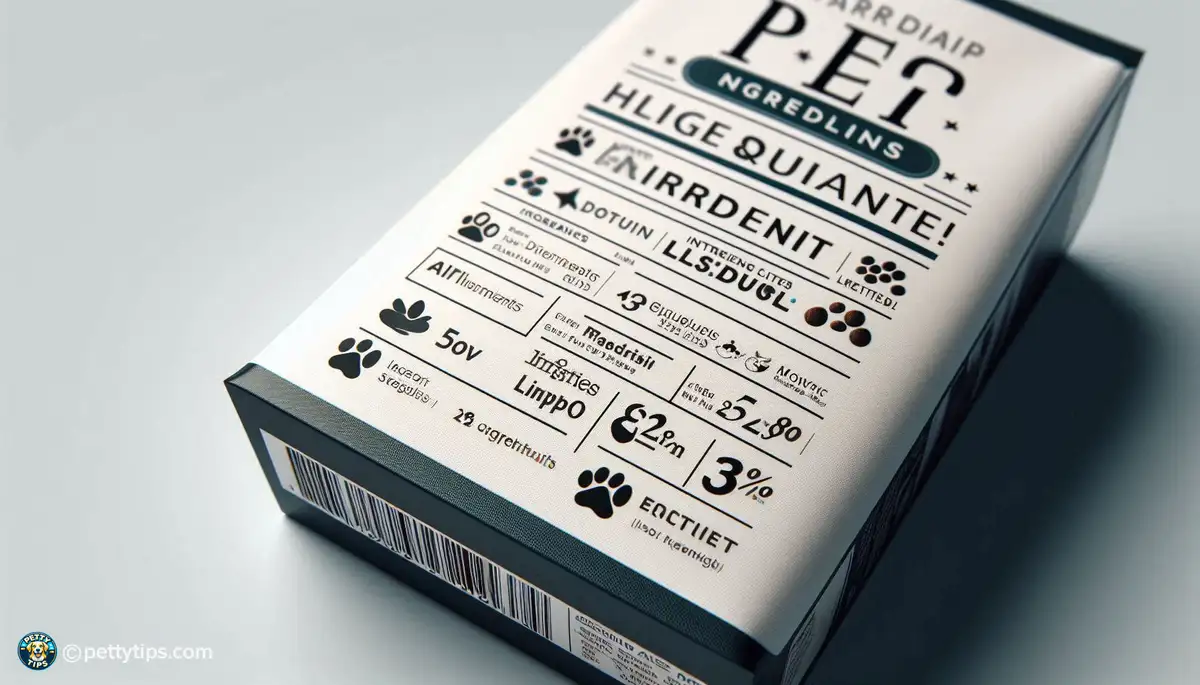
Debunking Myths: Separating Fact from Fiction in Grain-Free Pet Nutrition
Estelle Macleod - Sep 28, 2024 - 5 min read


Pet food labels can be a labyrinth of information, but deciphering them is crucial for your pet's well-being. At first glance, the ingredients list might resemble a cryptic code, but with a little insight, it becomes an invaluable tool for ensuring your furry friend's diet is free from allergens. Scan the list carefully; ingredients are typically listed in descending order by weight, so the first few items hold the most significance. Look out for common allergens like wheat, soy, and dairy products. These often appear near the top of the list, making them easier to spot.
Next up on the label is the guaranteed analysis. While it may seem like an obscure set of numbers, it provides essential information about the nutrient composition of the food. Pay particular attention to protein, fat, and fiber content, as these can vary significantly between brands and formulations. High protein content may be desirable for some pets, but it's crucial to ensure the source of protein is not a trigger for allergies. Likewise, excessive fat or fiber can lead to digestive issues in sensitive animals.
The nutritional adequacy statement is a key indicator of whether the food provides a complete and balanced diet for your pet. This statement typically comes in two forms: either the food has undergone feeding trials according to AAFCO (Association of American Feed Control Officials) guidelines, or it meets AAFCO's nutrient profiles. While both are acceptable, foods that have undergone feeding trials offer more assurance of their nutritional quality. Look for specific phrasing like "This food is formulated to meet the nutritional levels established by the AAFCO Dog Food Nutrient Profiles for all life stages" to ensure your pet's dietary needs are met.
Allergic reactions in pets can manifest in various ways, from skin irritations to digestive upset. To safeguard your pet against potential allergens, it's essential to familiarize yourself with common triggers. Ingredients like wheat, soy, and corn are notorious for causing allergic reactions in pets, so be vigilant when scanning the ingredients list. Additionally, keep an eye out for artificial preservatives, colors, and flavors, as these can also provoke sensitivities in some animals. Opting for limited-ingredient or hypoallergenic formulas can help minimize the risk of adverse reactions.
Navigating pet food labels becomes even trickier when manufacturers use synonyms or vague terms to disguise allergens. For example, wheat might be listed under aliases like "wheat flour" or "wheat gluten," making it harder to detect. Similarly, meat by-products can encompass a wide range of ingredients, including potential allergens like chicken by-products or beef by-products. Familiarize yourself with these alternative names to ensure you're not inadvertently exposing your pet to allergens.
Even if a pet food label appears free from common allergens, cross-contamination during the manufacturing process can still pose a risk. Manufacturers often produce multiple formulas on the same equipment, increasing the likelihood of cross-contact between allergens. Look for labels that explicitly state measures to prevent cross-contamination, such as dedicated production lines or rigorous cleaning protocols. Additionally, contacting the manufacturer directly can provide further clarity on their allergen control practices.
In the quest for the perfect pet food, marketing claims like "all-natural" and "grain-free" can be enticing. However, it's essential to delve deeper beyond the buzzwords. "All-natural" doesn't necessarily equate to hypoallergenic, as natural ingredients can still trigger allergic reactions in some pets. Likewise, while grain-free diets have gained popularity, grains themselves aren't inherently harmful unless your pet has a specific allergy. Focus on the ingredient list rather than falling prey to marketing hype.
"Limited ingredient" formulas have emerged as a popular choice for pets with food sensitivities. These diets typically contain a simplified list of ingredients, making it easier to pinpoint allergens. However, not all limited ingredient diets are created equal. Pay attention to the quality of the ingredients rather than just the quantity. Opt for formulas that feature novel protein sources and wholesome, easily digestible carbohydrates to minimize the risk of triggering allergic reactions.
"Hypoallergenic" has become synonymous with pet foods designed for sensitive stomachs and skin. While these formulas may indeed be gentler on some pets' digestive systems, the term "hypoallergenic" isn't regulated by any official body. As such, it's essential to scrutinize the ingredients list and verify the absence of common allergens. Look for formulas that prioritize novel protein sources and avoid artificial additives, as these can exacerbate sensitivities in susceptible animals.
When it comes to your pet's health, your veterinarian is your greatest ally. If you suspect your pet has food allergies or sensitivities, consulting with a veterinary professional is paramount. They can conduct allergy tests to identify specific triggers and recommend suitable dietary modifications. Additionally, veterinarians can provide personalized guidance based on your pet's unique needs, ensuring they receive optimal nutrition without compromising their well-being.
No two pets are alike, and what works for one may not necessarily suit another. Your veterinarian can tailor dietary recommendations based on factors like age, breed, weight, and existing health conditions. Whether your pet requires a specialized hypoallergenic diet or simply needs guidance on selecting the right commercial food, your veterinarian can offer invaluable insights. Don't hesitate to reach out to them for advice; they're dedicated to ensuring your pet leads a happy, healthy life.
Once you've implemented dietary changes, it's crucial to monitor your pet's response closely. Keep an eye out for any signs of improvement or worsening symptoms, such as changes in appetite, energy levels, coat condition, or digestive issues. Documenting these observations and sharing them with your veterinarian can aid in fine-tuning your pet's diet for optimal results. Remember, finding the right balance may require some trial and error, but with patience and persistence, you can help your pet thrive.
Navigating pet food labels can be overwhelming, but armed with the right knowledge, you can confidently select a diet that meets your pet's nutritional needs while minimizing the risk of allergens. By understanding the nuances of ingredient lists, decoding marketing claims, and consulting with your veterinarian, you can make informed choices that promote your pet's health and well-being. Remember, your pet relies on you to provide the best possible care, and with a little diligence, you can ensure they enjoy a happy, allergy-free life.